 Welcome to the fraternity of shooters. We are a diverse group, men women and children, doctors, lawyers and some Indian Chiefs, car mechanics, homebuilders and bakers of bread, millions of folks from all walks of life. The fraternity sprawls worldwide and is open to all of good intent. People in dozens of countries collect firearms, shoot competitively and hunt. You’ll find something in common with many of them.
Welcome to the fraternity of shooters. We are a diverse group, men women and children, doctors, lawyers and some Indian Chiefs, car mechanics, homebuilders and bakers of bread, millions of folks from all walks of life. The fraternity sprawls worldwide and is open to all of good intent. People in dozens of countries collect firearms, shoot competitively and hunt. You’ll find something in common with many of them.
Some of us are gun nerds, like computer nerds into the intricacies of guns and having no real application for them. Some are professional soldiers or law enforcement officers, some are military or former military, but the great majority are regular folks who enjoy the shooting sports, or who collect guns much like others collect art, stamps or French wine.
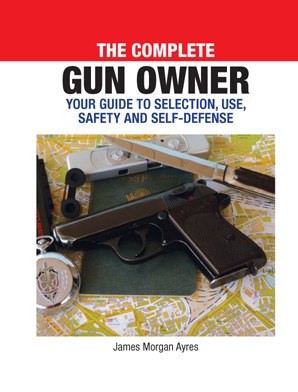 This book goes a fair distance beyond the basics and introduces the first time gun owner, or the gun owner with limited experience, to the many uses of the gun, such as hunting, sporting competition and self-defense. Given the critical nature of self-defense this book contains considerable detail on effective self-defense with firearms.
This book goes a fair distance beyond the basics and introduces the first time gun owner, or the gun owner with limited experience, to the many uses of the gun, such as hunting, sporting competition and self-defense. Given the critical nature of self-defense this book contains considerable detail on effective self-defense with firearms.
Also included are resources for additional information on the legal aspects of gun ownership, manufacturers of guns and related products, and other helpful hints and directions for new gun owners.
I have been a gun user for a half-century and either carried a firearm or kept one close to hand more or less daily for over thirty years. I have never yet had an accidental discharge. I generally hit what I aim at and have never shot anything I didn’t mean to shoot, although I’ve regretted some of the shots I have taken. I’ve successfully hunted large and small game and have been obliged to defend myself and others in armed conflicts in various countries around the world.
My intent in giving you a little of my history is not to impress you with my background and knowledge, which is undistinguished and meager compared to many others. Rather to let you know that the information in this book comes from someone at least minimally qualified to write on the subject. There are experts on various aspects of the gun and its usage whose opinions differ from mine. I cannot say they are wrong because their experience has led them to their own conclusions. But based on my own experiences I can, and do on occasion, respectfully disagree with them.
Stories are often remembered long after facts and figures have drifted away. So I have included a few stories meant to illustrate certain points and possibly to entertain and stimulate reflection, all of them taken from true life events. I hope you find the information in this book to be helpful if you decide to take to the field in pursuit of game or to the range in pursuit of that perfect score, and that you never have occasion to use any of these skills in defense of your life or that of your loved ones.
Sincerely,
James Morgan Ayres
Self Defense With Firearms
Introduction
The subject of armed self-defense is one of the utmost seriousness, one that is too often treated lightly. Doing violence to another person in the real world has nothing in common with ballet like choreographed movie violence. Violence is an ugly thing, a thing that will remain in your memory if you have the misfortune to witness or take part in such events.
I will discuss this subject based on my experience and observations and will do so in a realistic manner. Therefore, some of the language that follows will be, of necessity, a little rough, in some cases graphic, but no more so than needed to make certain points. It in not my intention to shock and I do not pander to those who enjoy vicarious bloody “war stories.” I recount certain events to instruct only and do so only in consideration of the possibility that such instruction might save the lives of good people.
When Native Americans first encountered Europeans with guns they concluded, based on their observations, that the European’s guns killed by producing a loud noise that killed by shock. Although good observers the Indians were incorrect in their conclusions. They simply didn’t have enough information or experience to reach the correct conclusion. That came later.
Many people today have beliefs about firearms that are equally erroneous. Few peaceful civilians in our culture have witnessed someone being shot. Fewer still have taken part in a gunfight. Most people get their impressions from movies and television. Based on these fictional depictions many seem to think that a handgun functions as some sort of paralytic device. The actor pulls a trigger, the movie gun seems to make a loud noise and someone falls down, often with no evidence of injury, or perhaps a small smear of fake blood. In more graphic films there may be a lot of movie blood, there may even be some simulated effects and some acting that simulates real world wounding.
We all know that movies and TV are fiction. We may even know that the movie gun is a prop incapable of firing live ammunition and that the noise is stripped in when the sound track is added. But repetitious viewing creates the unconscious belief that this is how guns work in the real world. They do not. This belief is as incorrect as the one held by first contact Native Americans. Guns are basically highly sophisticated rock throwers. They are not instant paralytic rays.
When a person fires a handgun at another person they usually miss. If they do hit their human target the bullet makes a hole in them. This usually results in a great deal of pain and much blood, more than you might imagine if you haven’t witnessed such events. When someone is wounded they often thrash around, scream, curse, cry, and run away, or perhaps fall down depending on a universe of variables. Various body tissues are sometimes exposed or ripped from the body. An expression, which seems to popular these days in movies about criminals is, “brains on the wall.” This is not in fact a metaphor. When a powerful bullet breaches the cranial vault brains do get splattered on walls, and elsewhere, along with bits of bone and other body tissues.
It is far more traumatic to witness this sort of thing in real life than to watch a sanitized, choreographed movie. If you do have such an experience the odds are you will experience a post traumatic psychological effect, whether you are the person who pulled the trigger, the one who got shot, or a bystander. If you are the agent of such violence you will find that the only way to live with having brought this to a fellow human is if you were totally justified in your actions. If you have fired to save your life or the life of a loved one or to prevent rape or other violence you will have the consolation of knowing you acted righteously. But you’ll still carry the weight and the memory.
As a moral person trying to defend yourself you do not shoot with the intention to kill. But it is impossible to shoot with the certainly you will only wound. No matter how much skill you have, once the bullet leaves the muzzle it can bring death to another. Your intention should be to simply stop the assailant, but things happen fast in violent encounters and there are no guarantees. Moreover, it is virtually impossible to effect such a stop without risking a lethal result.
I often hear rough and casual talk about shooting and killing, usually by people who have no experience of being shot at, or shooting at another person, or in fact of any violence other than the schoolyard variety. Such talk grates on my sensibilities, as it should on yours. Soldiers objectify their enemies in order to function and do what their duty requires of them. Rough dehumanizing talk is sometimes part of a soldier’s life. It should be no part of being an armed civilian.
Five hundred years ago John Donne wrote:
“No man is an island, entire of itself…any man’s death diminishes me… and therefore never send to know for whom the bell tolls; it tolls for thee.”
This comes down to us as literature, and like much great literature it contains a simple truth. If you have the great misfortune to be placed in a situation where you must take another’s life in order to survive, the experience will change you, and in not in any movie macho way. It will diminish you.
We live in a random and sometime violent world. Any of us might be forced to violence to protect a loved one or ourselves. The only thing worse than being forced to do violence is to witness the death or violation of a loved one, or to have such done to oneself. The decision to arm or not to arm yourself is yours alone. It is not mine.
I am neither an advocate nor an opponent of armed self-defense. Arming oneself is a moral issue with legal consequences, an issue that each must decide for themselves. If you have made your decision, and if the decision is to arm yourself, the following information may be of some value to you.

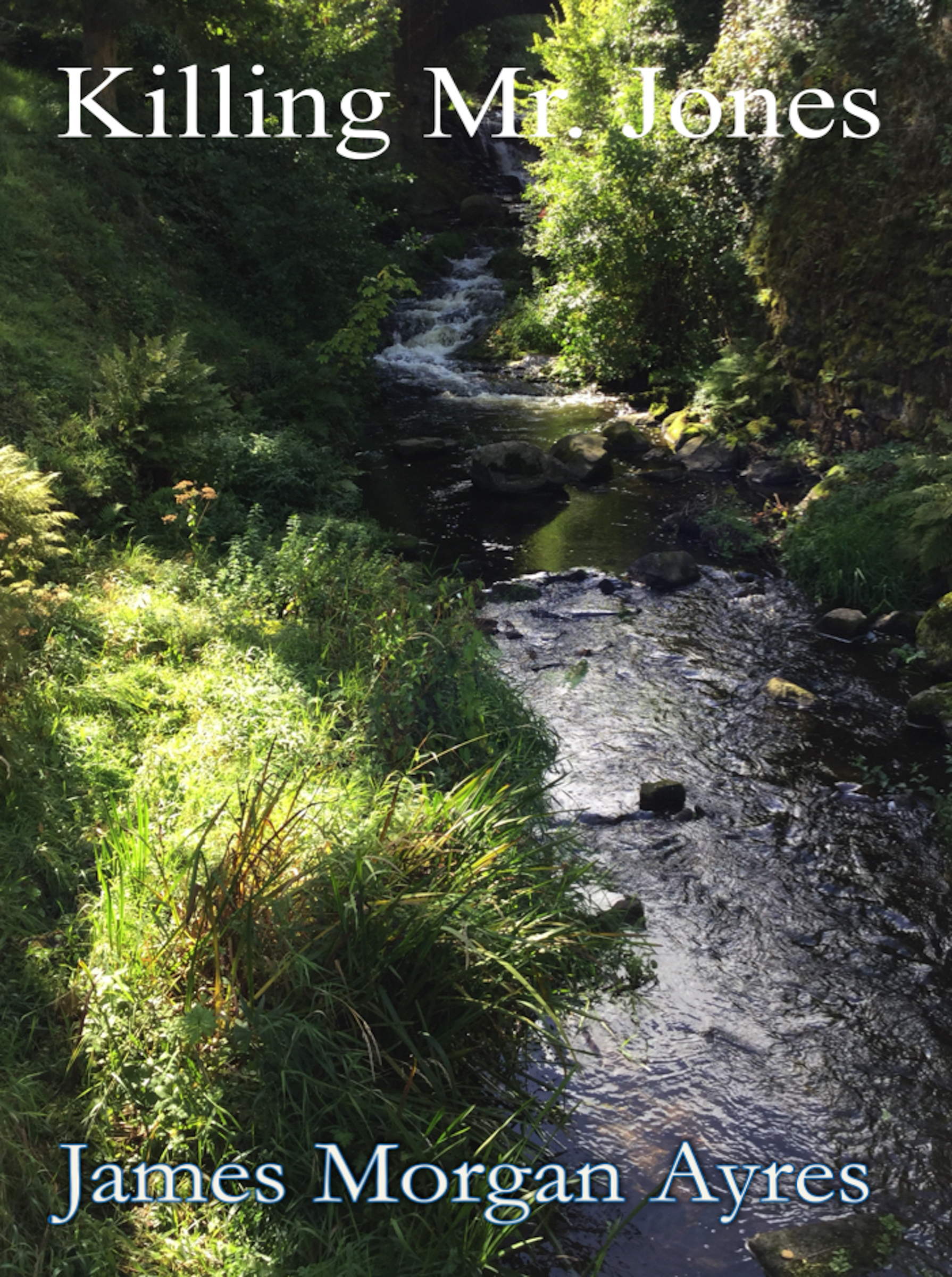 Sun, Apr 5, 2020: Killing Mr. Jones
Sun, Apr 5, 2020: Killing Mr. Jones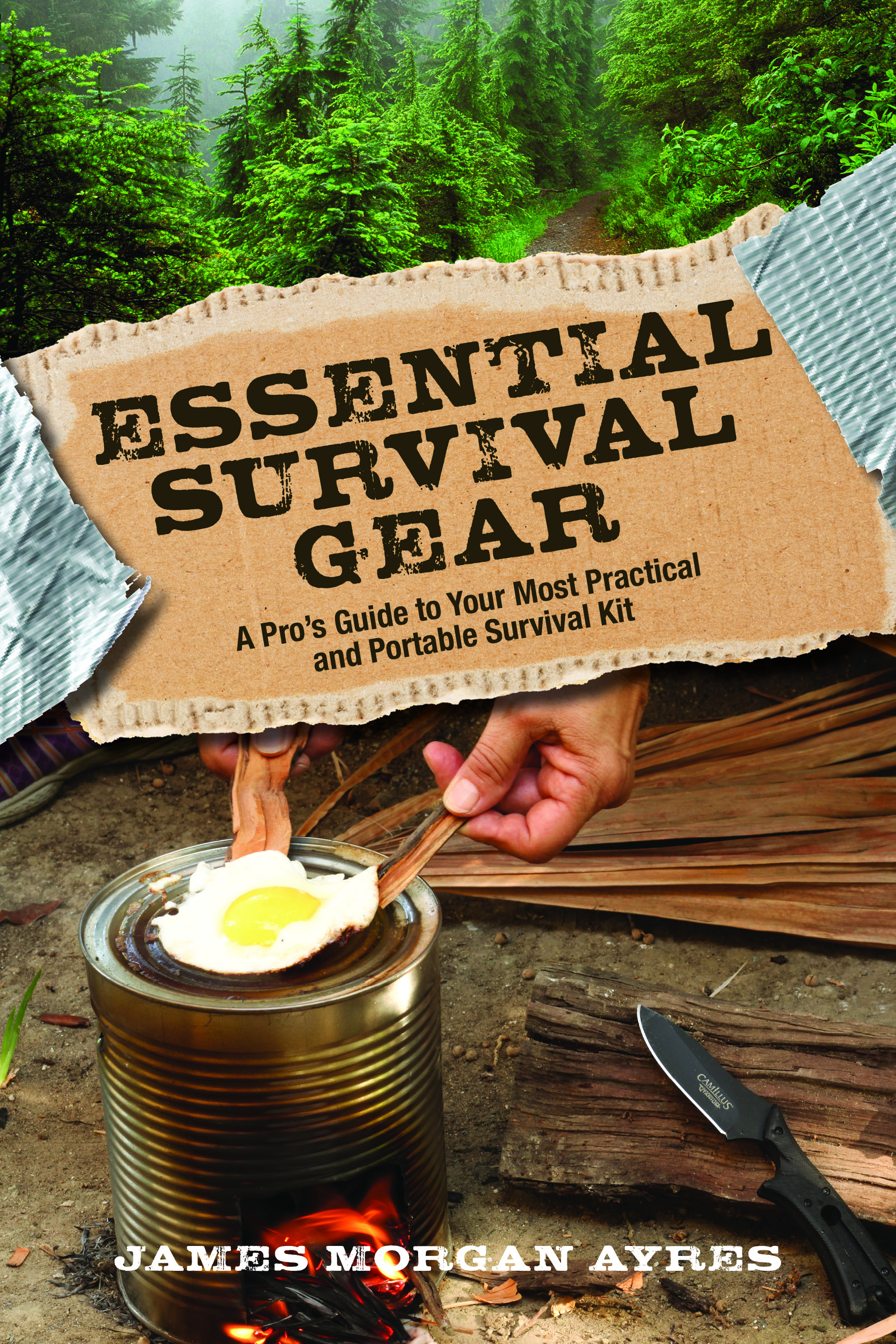 Wed, Apr 1, 2020: On Hoarding
Wed, Apr 1, 2020: On Hoarding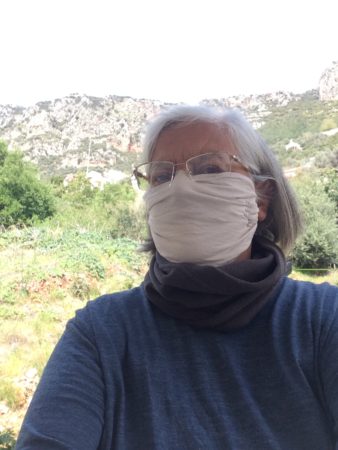 Mon, Mar 30, 2020: Masks Save Lives – Covid-19
Mon, Mar 30, 2020: Masks Save Lives – Covid-19 Sun, Mar 29, 2020: Visions of Apocalypse
Sun, Mar 29, 2020: Visions of Apocalypse Fri, Aug 23, 2019: Hijacked Twitter
Fri, Aug 23, 2019: Hijacked Twitter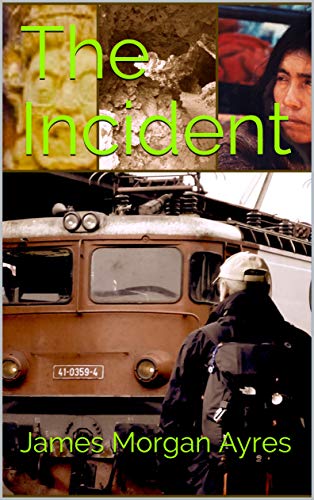 Sun, Aug 18, 2019: The Incident
Sun, Aug 18, 2019: The Incident Sat, Aug 10, 2019: Seas and Oceans Without End
Sat, Aug 10, 2019: Seas and Oceans Without End
Mr Ayres,
I wanted to thank you for your book. It was my first book on firearms ownership and I thought it was great! If you have the time, I would like to ask a few questions: Will you be writing another book on firearms? Also, I was curious what your opinion is on the CZ 75 (it wasn’t mentioned in your book). Finally, what do you think of the Walther PPK (made by Smith and Wesson)? Again, thank you.
Hi Matt,
Glad you liked the book and hope you found it useful. My writing schedule in booked out to the middle of next year and I do not at this time have another book on firearms planned. However, I might be releasing an expanded version of the section on defensive shooting in ebook format later this year. The CZ75 is an excellent handgun. A former associate used one during the Bosnian conflict to good effect and with no reliability issues.
I have no personal experience with the S&W version of the PPK, but have heard mixed reports. They seem to be priced reasonably, and might be worth a try. If you want a PPK it’s worth your while to buy a German or Manurhin made one. I have seen many that were made in the 60s that are still reliable and accurate. I have two through which I’ve put thousands of rounds. They are still amazingly accurate and totally reliable. I expect that they still will be when my sons inherit them.
Best regards,
James
The price of the Walther is $275.00. That is one reason I was so interested in it. I am not a very big person and as I have grown older, I have become more recoil sensitive. Thanks for all your insights and the info on the walthers. I also like the smaller .380 berettas too. I am thinking of using the FMJ at first, that way I get the penetration and can use the same round for practice and carry.
I have a friend here who is very good gunsmith and is particularly good with walthers and sigs. He kiddingly told me to buy the walther, then he would take all the sharp edges off and replace all the springs and should be good to go.
I think this is the route I will go. I will monitor your website as I enjoy your writing.
Thanks,
Bob
Bob,
That’s a heck of a price for that Walther, I’d jump on it. I recently sold one of mine for three times that. It did have some custom work, but still. As to sharp edges, I know some people get ‘slide bite’ from the PP series, but I never have. Don’t know what ‘taking off the edges’ would do to resale value, but that probably doesn’t matter if it makes it more comfortable for you. Replacing springs, in my experience, is a good idea for an old one. The modifications that Jesse, my protagonist in Jaguar, had done to his PPK were ones I had done to one…actually two, of mine back in the 60s. Worked perfectly.
Glad you enjoy my work. I’ll be posting some new material to my website in a week or so, also soon releasing a new eBook. If you like I’ll put you on my readers list.
Best wishes,
Morgan
Thank you for your reply. It means a great deal to me. I have an opportunity to buy a .380 PPK. It is one of the French made ones and has an absolute pristine bore although there is some wear on the finish. I don’t own many guns, but I have handled a couple of the Sig 230/232 and PPK guns as well as the Bersa and they seem to fit not only my carry menthod but my hand as well. Given my age, it is increasingly difficult to carry concealed with anything approaching a service size gun, so I am looking forward to the thinner german gun.
Just one question: Do you carry ball ammo in your smaller guns? I have read the first three chapters of your book from your web site. What caliber is your protagionist using?
Thanks again.
Bob Chilton
Hi Bob,
As long as I have time, and I do now have time, I’m always glad to correspond with readers.
The French made Walthers were made with German tooling are the equal of the best of the pre-war German handguns. I’ve owned over a dozen of them and never had a problem. What’s the price of the PPK?
I tried the Sig 230 and liked it a great deal. The accuracy was in the same class as the Walthers. I bought one for my wife because she is VERY recoil sensitive and she felt the grip of the Sig absorbed the ‘bite’ better than the PPK. Probably it does, but it is a bit larger and I stayed with my Walthers simply because of long term familiarity. The Bersa is a good gun – for the money, but not in the same class as the Walther and Sig.
As to what ammo I use, or used, that varied according to the immediate need and availability. At one time or another I’ve used everything from standard FMJ to high speed hollow points and sub-sonics, and pretty much all the exotics. There was a French made round…can’t think of the name, it was around the community back in the 70s, and was extremely high speed with a post in the center of the projectile – amazingly destructive round, haven’t seen them in years. These days I’ve had good service in .380 from both the Black Hills 90 grain JHP and the Fiocchi 90 grain FMJ.
Hope you enjoyed the beginning of Jaguar. As to what caliber Jesse is using, there is an excerpt below.
Best regards,
Morgan
XXXXXXX
Sitting on the bed I pulled on a pair of thin leather gloves, dropped the magazine from my handgun and cleared the chamber. I thumbed the hi-speed hollow points out of the magazines and reloaded with subsonic solids. The suppressor screwed snugly onto the threaded muzzle. Even without the suppressor the subsonic .22s made a POP rather than the BANG of a large caliber, or the SNAP of the .22 hollow points. Most people didn’t recognize the sound as a gunshot. The combination of subsonic rounds and the suppressor insured that the loudest sound would be the metallic snick, snick of the slide.
My Walther had started life as an alloy framed .22 PPK, a favored weapon in the covert community. An artist of a gunsmith had replaced the original barrel with the half inch longer PP barrel, threaded the outside of the barrel to accept the suppressor and mated the suppressor with the barrel so there was no loss of the phenomenal accuracy inherent in the little handgun.
His trigger job gave it a smooth, clean breaking trigger stroke. He had also throated and polished the feed ramp to reduce the possibility of a failure to feed, changed the mainspring to lighten the trigger pull, and filled the hollow hammer spur with lead to aid ignition. The little pistol weighed less than a pound, was totally reliable and as accurate as a match grade target pistol.
XXXXXXX
Mr. Ayers:
I have read both your non fiction books and enjoyed your clear
headed approach tremendously. I have been shooting for about 30 years. While
I find some of the gun rags entertaining, I am at a loss to reconcile the
logic they offer pertaining to the size gun the average guy on the street should carry. I love glocks and have the 26 for carry. It is a little thick.
I would be most interested in your opinions concerning size and caliber
effectiveness. I am very tired of all things 1911. Your logic based
experienced will be a breath of fresh I think. Thank you for your time.
Hi Bob,
Thanks you for your comments. Coming from a retired SMsgt, I’m sure your comments come from an informed point of view on this topic.
As to the ‘gun rags’ they’re mostly for hobbyists and many of the articles are written for entertainment value. Not one professional I know gives them more than a passing glance, indeed many don’t know of their existence.
I recall one occasion a few years ago when I asked a former SF officer then working under civilian cover in Bosnia, what he thought about the so called controversy on the 9mm versus the .45. He looked at me as if I was from Mars. He was totally unaware of any such controversy and made it very clear that he had found the 9mm to be perfectly adequate for his needs when he was in a high threat zone. When not in such an area he relied on a pocket sized .32.
As I have written, my experience and research has made it abundantly clear that shot placement is the most important factor in wound effectiveness, not caliber – certainly in handguns.
The Glock 26 is an easy pistol to like. Mine is noticeably more accurate than my 19, and it’s handy sized, sort of. Being the same thickness as a 19 I found it to be no more comfortable or convenient for IWB carry than the larger pistol and too chunky for pocket carry.
My choice of a 9mm for civilian carry is the HK P7. It is a flat as a PPK, although heavier, and functional accuracy is the best I’ve ever seen in a 9mm – expect for the Sig 210, a much larger handgun. In fact, my P7 out of the box will outshoot any of my .45s, including custom pieces costing three times as much. But even the P7 is too much gun for me to drag around on a daily basis. For deep cover carry in other than high threat zones, the so called ‘sub-calibers’ have worked for me over the years – when used within their limits.
Given that you enjoyed my non-fiction books, you might enjoy reading one of my novels, The Jaguar’s Heart. It’s based on my experiences in Mexico, with a VERY LARGE helping of imagination. Although it’s written as a thriller with all the required dramatic conventions, the procedural portions, the weapons and tactics, are congruent with experience – as are the depictions of daily life in that time and place. The Aztec and Mayan mythology and ‘socerery’ as are I found them, and as I have researched. The first three chapters are on my website, along with other writings.
Thanks again for writing, it’s always good to hear from a reader, especially an informed one.
Best regards,
Morgan